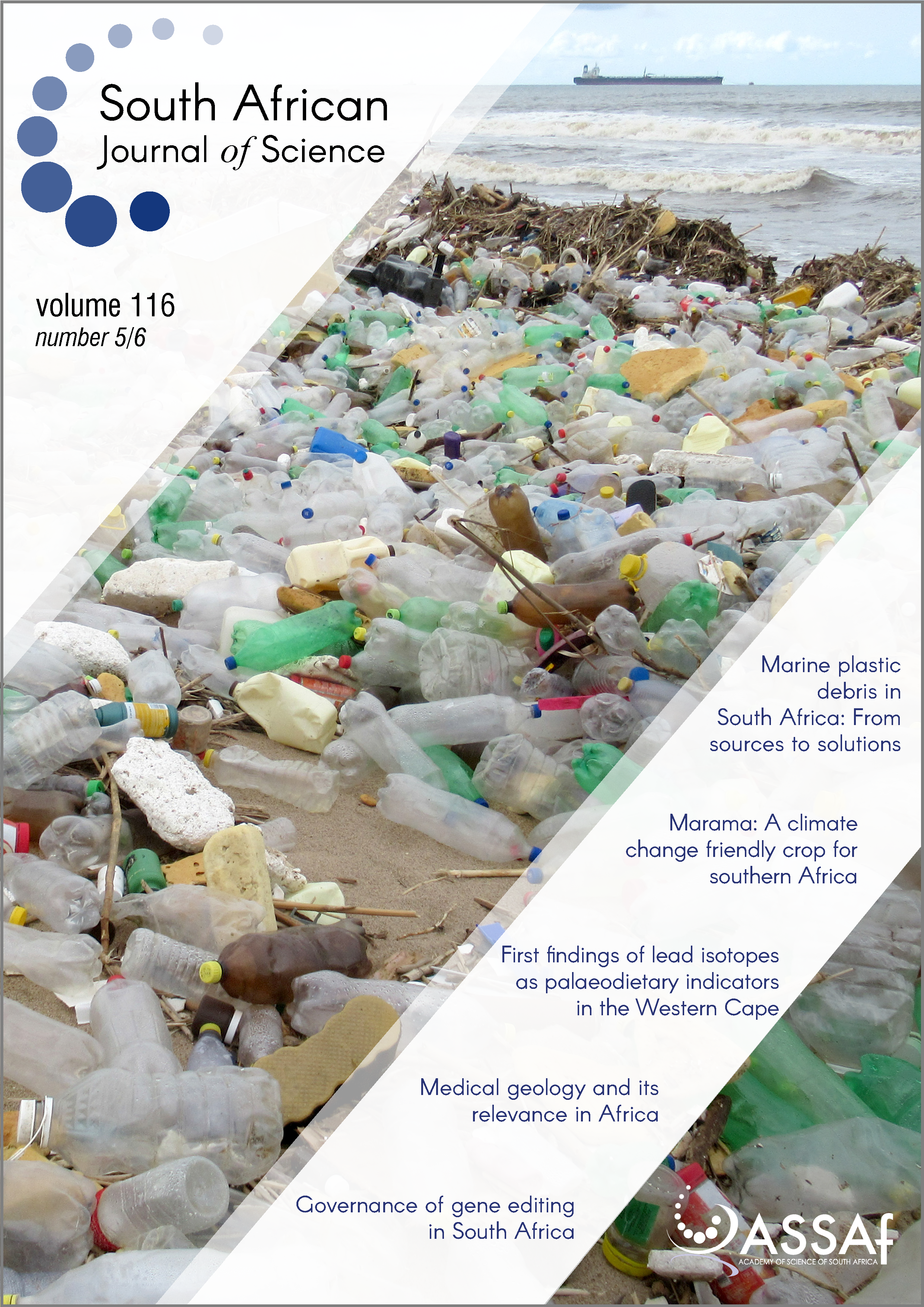The transport and fate of marine plastics in South Africa and adjacent oceans
DOI:
https://doi.org/10.17159/sajs.2020/7677Keywords:
beach debris, floating debris, seabed debris, biofouling, sedimentation, ocean transport, burial, exhumationAbstract
South Africa is thought to be one of the worst contributors of plastic into the sea globally. Although some plastic items derive from offshore sources (mainly fishing and other maritime activities, but also long-distance transport), the importance of local, land-based sources is indicated by the composition of beach debris and the concentration of macro-, meso- and microplastics close to urban source areas. Some 60–90% of plastic from land-based sources is expected to strand on beaches, but plastic standing stocks on beaches are much lower than global model predictions of land-based pollution. Burial in beaches and transport into backshore vegetation are significant sinks, although this plastic is likely to be released as the climate crisis leads to rising sea levels and more extreme storms. Most buried items are fairly small, while many larger items, which account for most of the mass of plastic, are removed from beaches by cleaning efforts. However, even daily accumulation rate estimates – which exclude the effects of cleaning – fall well short of model predictions of plastic leakage from land-based sources. Oceanographic models predict that plastics entering the sea from South Africa are exported to the South Atlantic and Indian Oceans, with the proportion depending on source location and item density. At sea, floating macroplastic is concentrated close to urban centres. Farther offshore, plastic items tend to be large and buoyant because biofouling causes small, low buoyancy items to sink. Size-selective removal of plastics by biota might also contribute to the paucity of floating microplastics (<1 mm). The seabed is likely to be the main long-term sink for waste plastics, but the limited data available indicate low levels of plastics on the seabed off South Africa. Only a small proportion of plastic predicted to leak into the sea from South Africa can be accounted for. However, this should not delay the implementation of effective mitigation measures to limit plastic leakage.
Significance:
- High densities of waste plastic around urban centres indicate that most macro- and microplastics come from local, land-based sources and do not disperse far at sea.
- Beach clean-ups remove up to 90% of the mass of stranded plastic, largely found in macroplastic items (>25 mm).
- The seabed is a long-term sink for marine plastics, but densities of plastic on the seabed around South Africa are still modest.
- The global model prediction of plastic leakage from South Africa into the sea probably is a gross overestimate.
Published
Issue
Section
License

All articles are published under a Creative Commons Attribution 4.0 International Licence
Copyright is retained by the authors. Readers are welcome to reproduce, share and adapt the content without permission provided the source is attributed.
Disclaimer: The publisher and editors accept no responsibility for statements made by the authors
How to Cite
- Abstract 3650
- PDF 2093
- EPUB 269
- XML 429













.png)